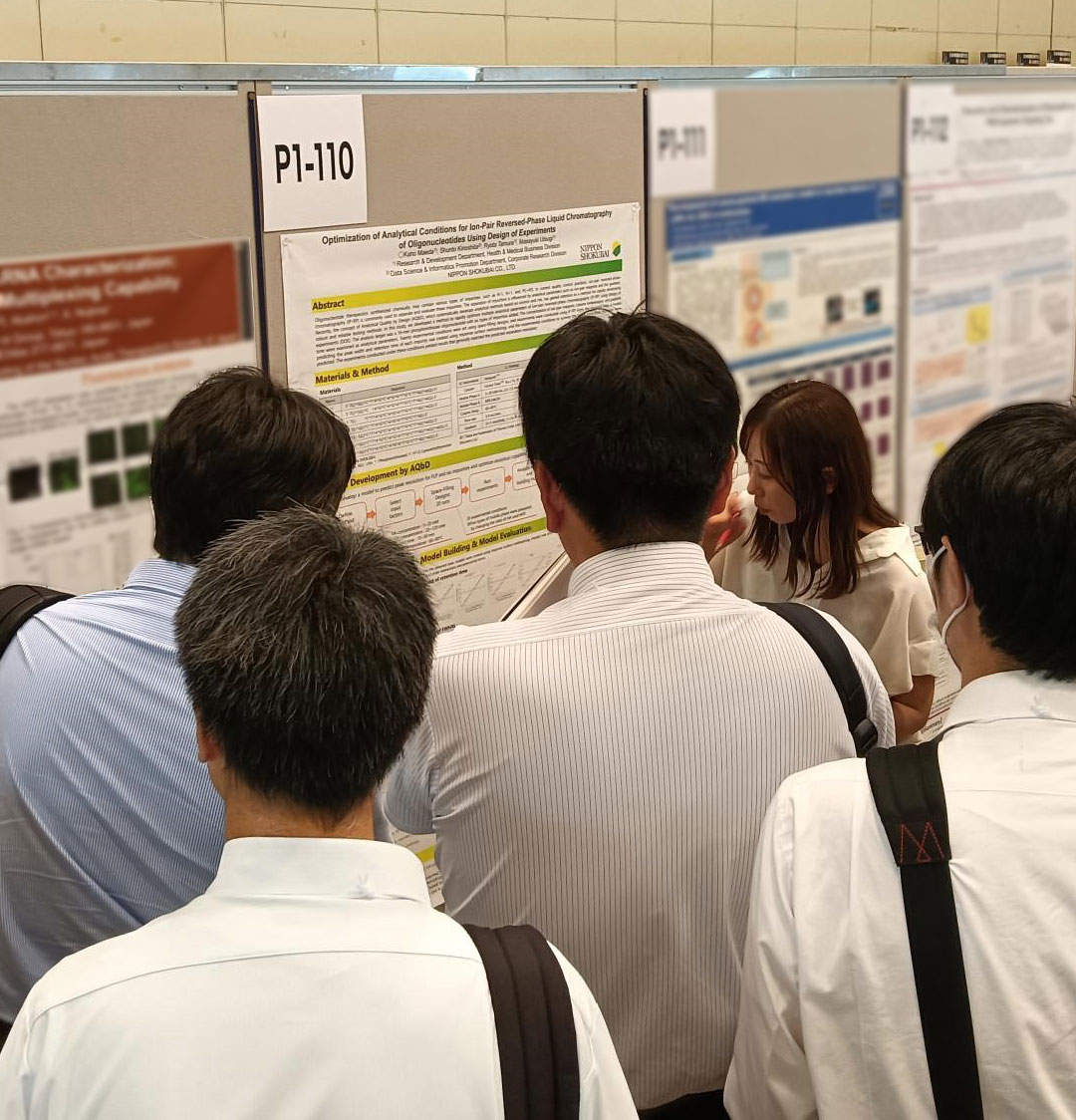Poster presentation at the 10th Annual Meeting of the Nucleic Acids Therapeutics Society of Japan [Optimization of Analytical Conditions for Ion-Pair Reversed-Phase Liquid Chromatography of Oligonucleotides Using Design of Experiments]
We gave a poster presentation at the 10th Annual Meeting of the Nucleic Acids Therapeutics Society of Japan, held at Kobe International Exhibition Hall No. 2 from July 1st to 3rd, 2025, and we would like to introduce the content published in the abstracts collection.
Presentation
| Title | Optimization of Analytical Conditions for Ion-Pair Reversed-Phase Liquid Chromatography of Oligonucleotides Using Design of Experiments |
| Presenter | Kaho Maeda Research & Development Department, Health & Medical Business Division, NIPPON SHOKUBAI CO., LTD. |
Background
Oligonucleotide therapeutics synthesized chemically may contain various types of impurities, such as N-1, N+1, and PS→PO. In current quality control practices, ion-pair reversed-phase chromatography (IP-RP) is commonly used to separate and evaluate these impurities. The separation of impurities is influenced by analytical parameters such as ion-pair reagents and the gradient. Recently, the concept of Analytical Quality by Design (AQbD), which systematically develops analytical methods based on science and risk, has gained attention as a method for rapidly developing robust and reliable testing methods.
Research Contents
In this study, we developed a method to rapidly optimize multiple analytical parameters of ion-pair reversed-phase chromatography (IP-RP) using design of experiments (DOE). The analysis target was a 16-mer phosphorothioate oligonucleotide with six types of impurities added. The concentration of ion-pair reagents, column temperature, and gradient were examined as analytical parameters. Twenty experimental conditions were set using space-filling designs, and experiments were conducted using IP-RP. From the obtained data, a model predicting the peak width and retention time of each impurity was created using response surface methodology, and the experimental conditions to achieve the target separation resolution were predicted. The experiments conducted under these conditions yielded results that generally matched the predicted separation resolution. Additionally, the impact of each analytical parameter on separation was systematically understood. This method could be applied not only to IP-RP but also to various separation modes of liquid chromatography. By evaluating the interactions between parameters based on AQbD, it is expected to lead to the acquisition of a very extensive knowledge base.

Meeting Information
| Name | The 10th Annual Meeting of the Nucleic Acids Therapeutics Society of Japan |
| Meeting | July 1st (Tue) – July 3rd (Thu), 2025 |
| Venue | Kobe International Exhibition Hall No. 2 |
| Official website | https://www.natsj.jp/2025/natsj10 |
